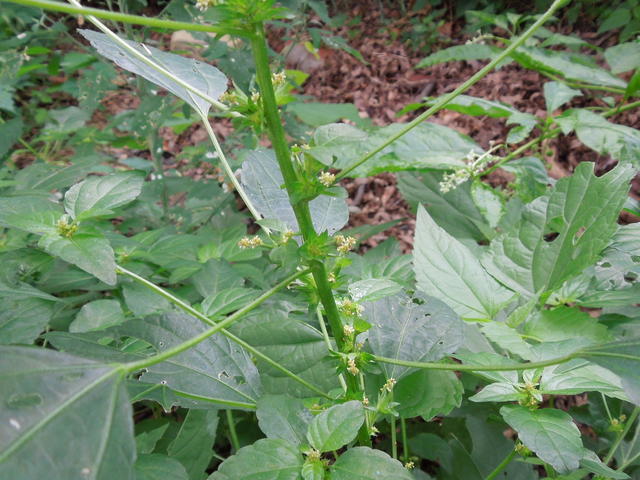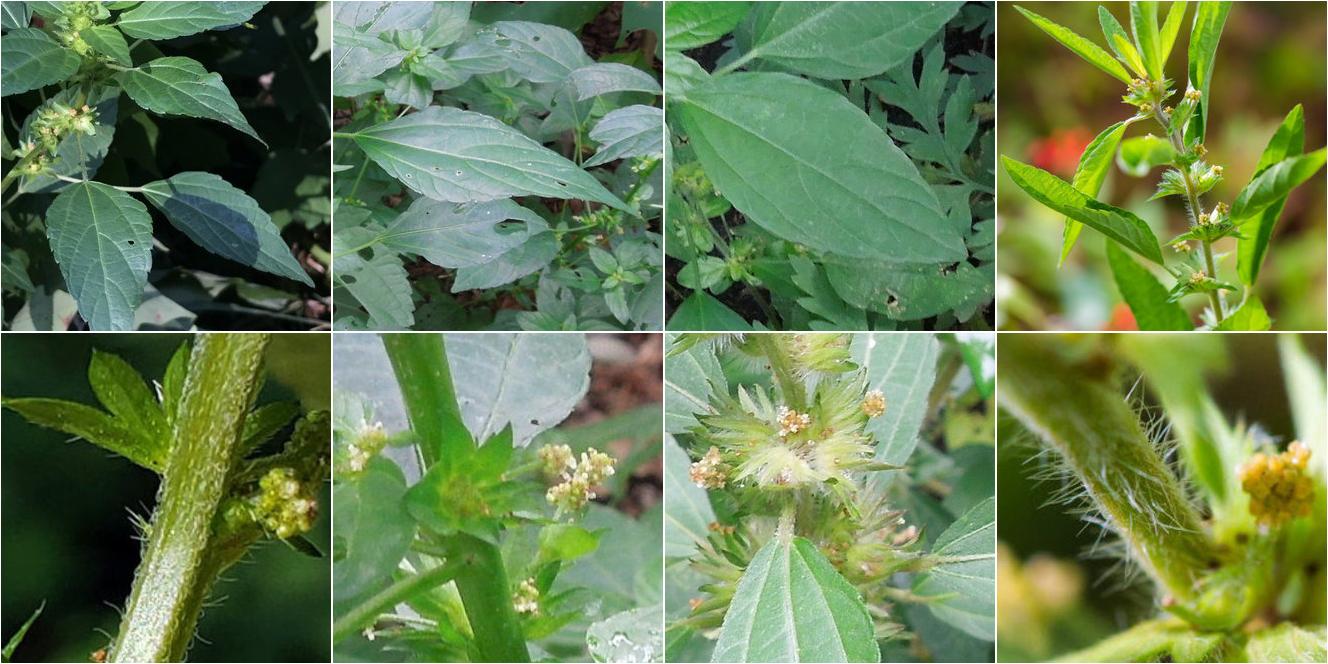Rhomboid Mercury (Acalypha rhomboidea) vs. Virginia Threeseed Mercury (Acalypha virginica)
Updated July 11th, 2022These two species overlap greatly in range and can occur together in the same habitat. They are easily distinguished by bracts. Some individuals are easily distinguished by leaf shape and petiole length, although high variability of these traits makes them less reliable. New growth has shorter petioles, and growing conditions can alter leaf shape considerably. Although both are habitat generalists relying on disturbance at a key point in the growing season, A. rhomboidea tolerates a wider range of light and moisture conditions and soil textures, as well as low soil fertility. A. virginica prefers slightly drier conditions, and is more restricted to partly-sunny habitats with rich, loamy soil, and is slightly less likely in anthropogenic habitats.




